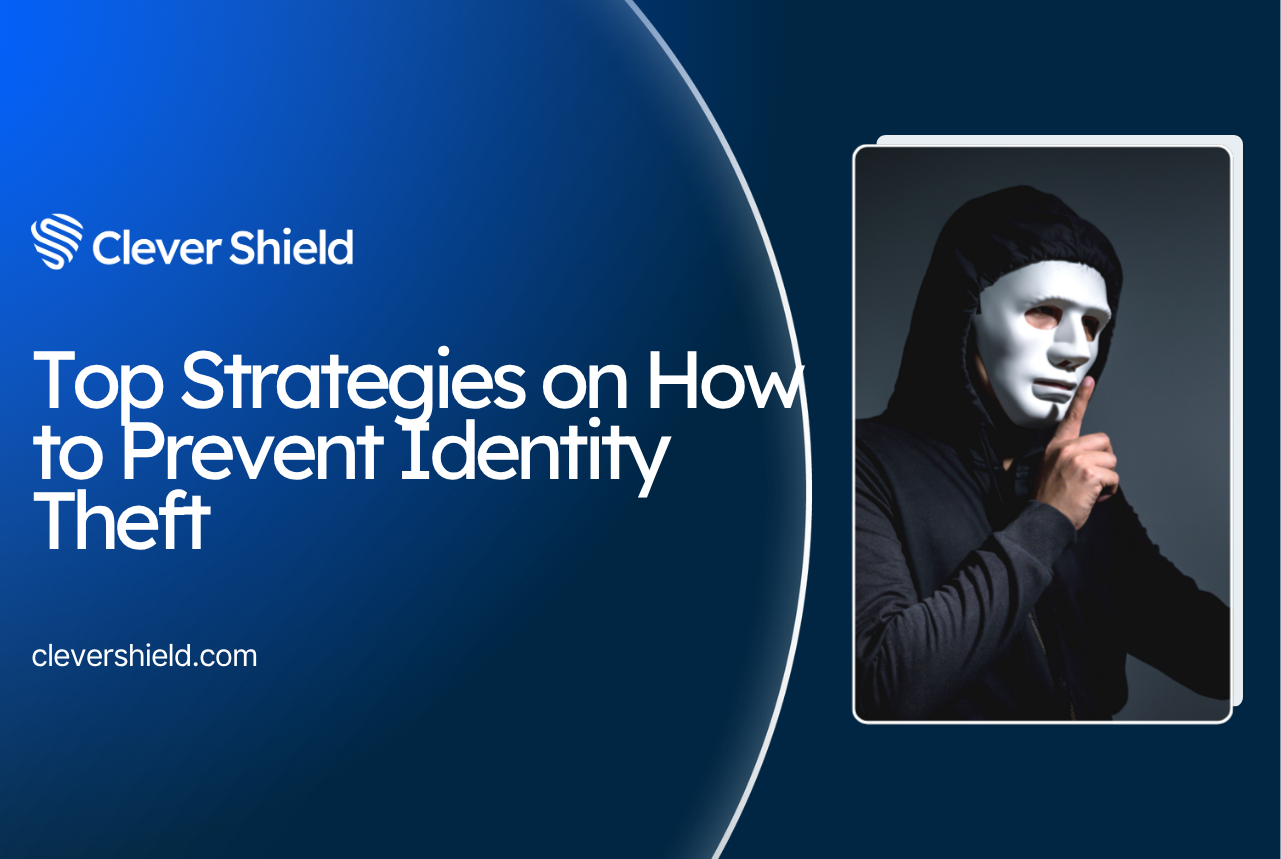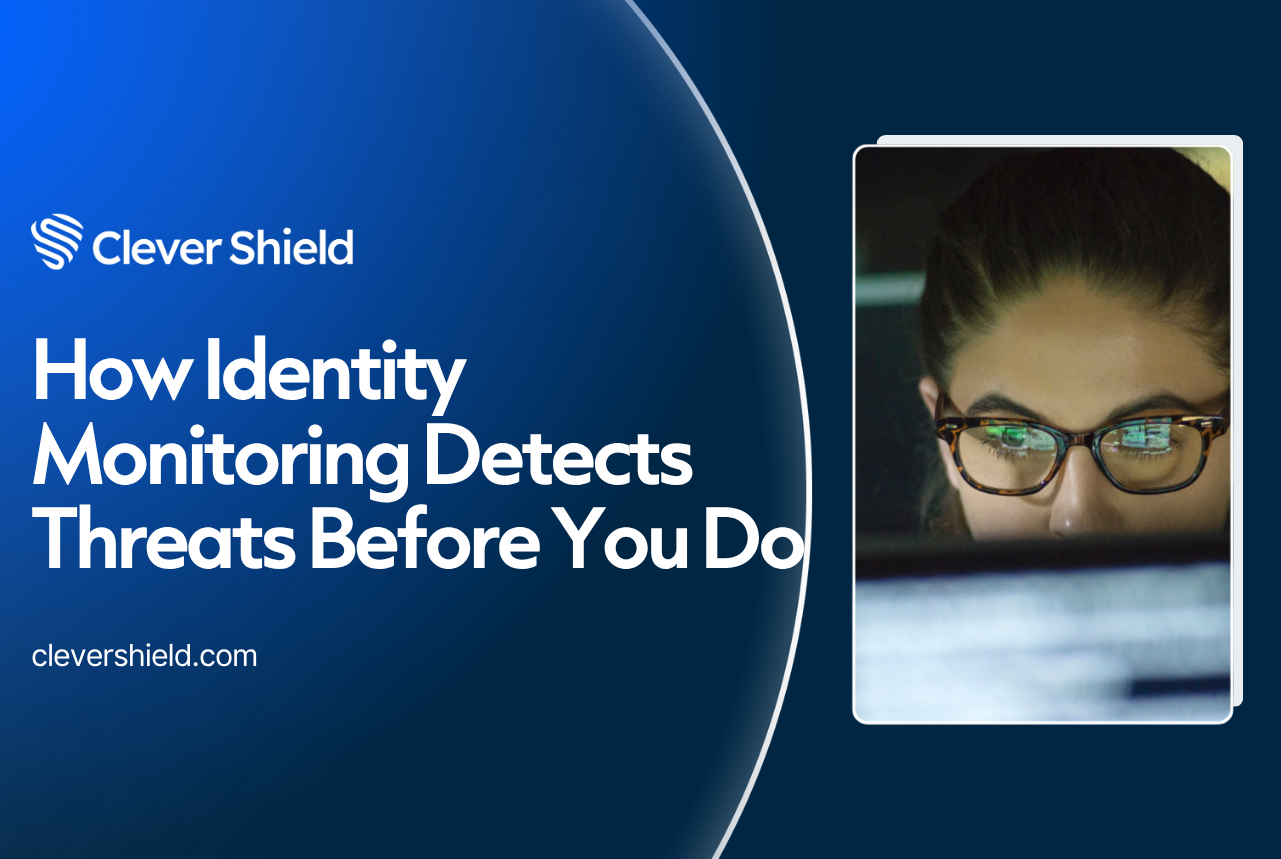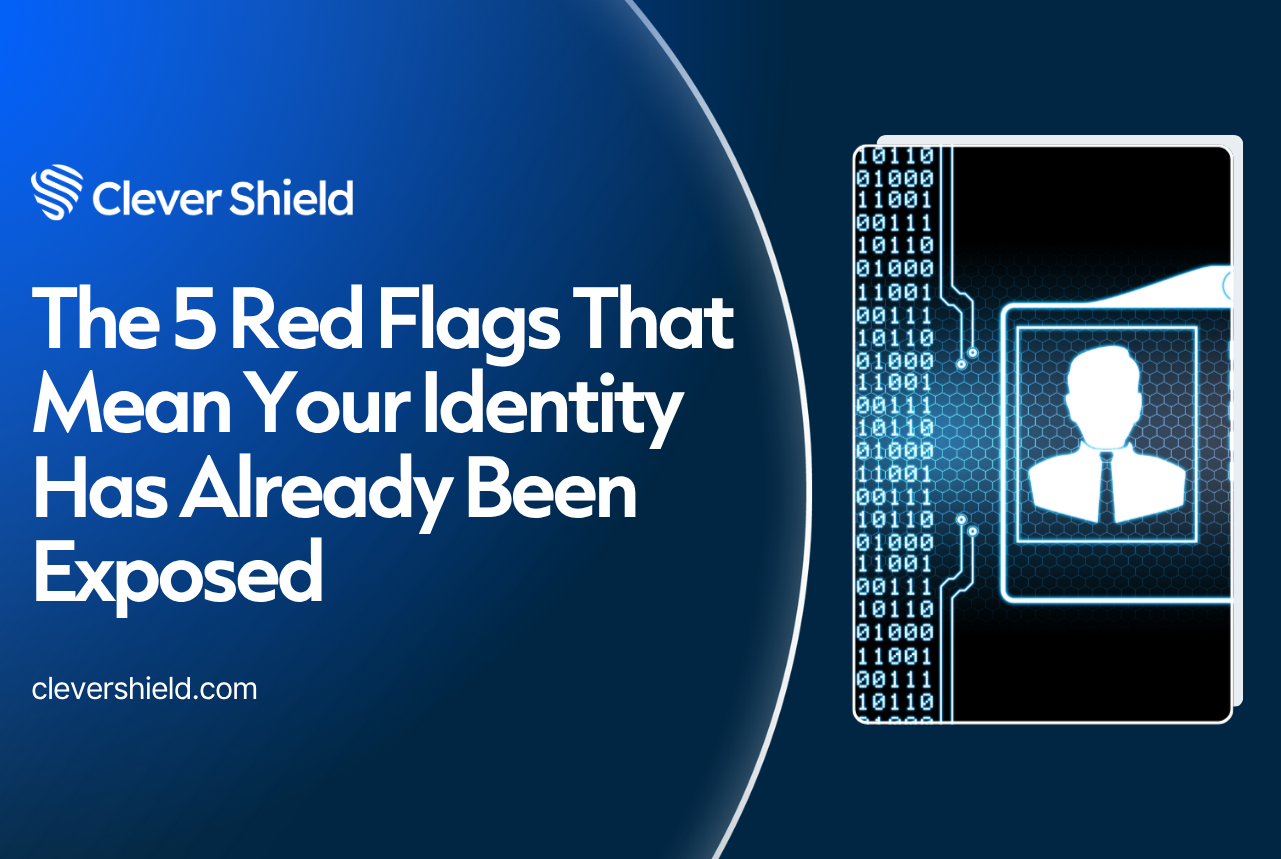Worried about identity theft? This guide on how to prevent identity theft covers everything you need to know, from understanding the tactics of identity thieves to securing your personal information and monitoring your accounts. Take control and protect your identity with these essential steps.
Key Takeaways
Understanding the tactics and warning signs of identity theft is crucial to effectively prevent it.
Implementing strong security practices, such as using strong passwords and enabling multifactor authentication, significantly reduces the risk of identity theft.
Regularly monitoring financial accounts and credit reports helps promptly identify unauthorized activity, enabling quick action to mitigate potential damage.
Understanding Identity Theft
Identity theft happens when an individual uses your personal information to impersonate you or to commit theft. Identity thieves use stolen personal information to commit fraud or other criminal activities, often wreaking havoc on victims’ financial and personal lives. Common types of information used for identity theft include:
Social Security numbers
Passwords
Addresses
Account numbers Understanding how identity thieves operate is crucial in protecting yourself from becoming a victim of identity stolen.
To effectively prevent identity theft, it’s essential to recognize the tactics used by identity thieves and the warning signs that your identity may have been stolen. Staying informed and vigilant allows you to take proactive steps to safeguard your personal information and reduce the risk of falling victim to these criminals.
Common Tactics Used by Identity Thieves
Identity thieves employ various tactics to steal personal information, including unauthorized access to databases, phishing attempts, and fraudulent emails or messages designed to trick individuals into revealing sensitive information. Phishing attempts often create a sense of urgency to prompt quick responses, making personal information easily accessible to thieves and identity thieves who steals it.
Awareness of these tactics and protecting your personal information are key steps in preventing identity theft.
Warning Signs Your Identity Has Been Stolen
Monitoring your credit reports annually helps identify any discrepancies or unauthorized transactions, which are crucial warning signs of identity theft. Individuals are entitled to request a free credit report from each of the three major credit bureaus annually. Other warning signs include unexpected bills, calls from debt collectors for debts you don’t recognize, and unfamiliar accounts or charges on your credit report. Vigilance in monitoring your financial activity can help you catch identity theft early and take swift action.
It’s also important to pay attention to smaller, more subtle signs, such as receiving mail about accounts you didn’t open or being denied credit unexpectedly. These can be early indicators that your personal information has been compromised. By staying alert to these warning signs, you can take immediate steps to protect yourself and mitigate potential damage.
Securing Personal Information
Securing your personal information is a fundamental step in preventing identity theft. This involves using strong passwords, enabling multifactor authentication, and ensuring sensitive documents are stored securely.
These proactive measures can significantly reduce the risk of your other personal information falling into the wrong hands.
Strong Passwords and Password Management
Creating strong passwords is essential for identity theft protection. To enhance security:
Avoid using personal information such as birth date or names in your passwords.
Use a combination of uppercase and lowercase letters.
Include numbers.
Incorporate symbols.
Always create a strong password to safeguard your accounts.
To safeguard your personal information, consider the following steps:
Regularly update your passwords.
Use a password manager to keep track of your passwords.
Limit access by not sharing your passwords.
Avoid using the same password for multiple accounts.
Multifactor Authentication
Multifactor authentication (MFA) adds an extra layer of security beyond just passwords, ensuring that unauthorized users cannot access your account even if they have your password. MFA requires multiple methods to authenticate a user’s account, such as:
Text messages
Unique codes via email
Fingerprint scans
Face scans.
Implementing MFA on your accounts provides an additional layer of protection and significantly reduces the risk of identity theft.
Secure Storage for Sensitive Documents
It is important to keep sensitive documents and other documents, like social security card and birth certificates, stored securely to prevent identity theft. Here are some key practices:
Do not leave sensitive documents in accessible places like hotel rooms.
Keep sensitive documents in a secure location.
Shred sensitive materials before disposing of them to ensure personal information is not compromised.
These precautions help protect your sensitive information from prying eyes and reduce the risk of protected identity theft.
Monitoring and Alerts
Monitoring your personal and financial information is crucial for identifying unauthorized activity early. Real-time monitoring solutions, such as those offered by Clever Shield, send alerts to users when their personal information is compromised. Regularly verifying your monthly account statements helps catch unauthorized transactions promptly.
Staying vigilant and utilizing monitoring solutions allows you to take swift action to prevent identity theft.
Regularly Check Credit Reports
You should check your credit reports every year to ensure accuracy and prevent identity theft. Monitoring your credit report can help identify unauthorized accounts or transactions early.
Users receive a single credit bureau VantageScore 3.0 from Experian when checking their credit score, providing a comprehensive view of their credit health. Regularly reviewing your credit reports helps you stay on top of your financial situation and catch any discrepancies early.
Identity Theft Monitoring Solutions
Identity theft monitoring solutions are designed to track data and alert users about breaches. Credit monitoring helps detect unusual or unauthorized activity in users’ accounts. Veterans and beneficiaries whose data is at risk can receive free credit monitoring services.
These solutions provide an extra layer of security, helping you stay informed and take immediate action if your personal information is compromised.
Dark Web Monitoring
The service includes real-time alerts if any personal information is detected on the dark web. Dark web monitoring is essential for detecting if personal data has been compromised by identity thieves. Utilizing dark web monitoring services is a proactive strategy to help prevent identity theft.
Monitoring the dark web alerts you to potential threats, allowing you to take steps to protect your information.
Online Behavior and Cybersecurity
Maintaining safe online behavior, such as being cautious about sharing personal details, is essential in preventing identity theft. Following cybersecurity best practices, such as using strong passwords and keeping software updated, can significantly reduce the risk of identity theft.
Adopting these habits helps protect your personal information and keeps you one step ahead of identity thieves.
Safe Online Shopping Practices
Identity thieves can drain bank accounts, making it crucial to be cautious when shopping online with a debit card. To protect sensitive information, avoid putting such data in emails, social media, or text messages.
When using public computers or networks, keep the following precautions in mind:
Be cautious as security may be unreliable.
Always sign out of your accounts when using public computers while traveling to keep your information secure.
Promptly notify your financial institution of any suspicious charges on your account to prevent further loss.
Following these practices allows for safe online shopping and protection of your financial information.
Recognizing Phishing Scams
If you receive a message that seems suspicious or asks for personal information, be cautious and investigate further. If you’re unsure about the genuineness of a message, contact the sender using a different device or account, or consider making phone calls for verification. This could help establish a secure link to the sender using your cell phone.
Many identity theft protection services offer features like real-time alerts for any unusual account activities. Recognizing and avoiding phishing scams helps protect you from identity theft and keeps your personal information secure.
Keeping Software Updated
Keeping software updated is essential for protecting against vulnerabilities that cybercriminals exploit. Installing and regularly updating antivirus programs helps to automatically detect and remove malware. A firewall acts as a barrier between a trusted network and untrusted networks, providing an additional layer of security. Together, keeping software up-to-date, using antivirus programs, and maintaining firewalls significantly reduce the risk of identity theft.
Staying on top of software updates protects your other devices and personal information from cyber threats.
Protecting Financial Accounts
Safeguarding your bank accounts and financial assets is crucial to preventing identity theft. Using credit cards instead of debit cards for online purchases can provide better fraud protection. Credit cards often come with additional safety features, such as zero liability policies for fraudulent charges.
Proactive measures to protect your financial accounts reduce the risk of identity theft and secure your financial future.
Monitor Bank Statements and Account Activity
Regularly monitoring your bank statements is crucial to identify any unauthorized charges or discrepancies. When reviewing your statements, you should:
Look for unfamiliar transactions
Check for unexpected fees
Identify charges that do not match your records If you notice any discrepancies, report them quickly to your bank to mitigate potential losses.
Staying vigilant and regularly reviewing account number activity helps catch unauthorized transactions early, allowing you to take action to protect your financial information.
Setting Up Fraud Alerts
Establishing fraud alerts with credit bureaus can help you stay informed about potential fraudulent activities. Fraud alerts:
Help you stay informed about any new credit applications under your name.
Inform creditors to verify a consumer’s identity before granting credit.
Add a layer of protection against identity theft.
Placing an initial fraud alert on your credit report lasts for one year and signals creditors to verify your identity before opening new accounts. Setting up fraud alerts is a proactive step in protecting your identity and financial information.
Freezing Credit When Necessary
Placing a credit freeze can prevent identity thieves from opening new accounts in your name. A credit freeze restricts new credit accounts from being opened in your name, effectively thwarting identity thieves. It also prevents lenders from accessing your credit report, making it difficult for identity thieves to open accounts in your name.
Freezing your credit adds an extra layer of protection and significantly reduces the risk of identity theft.
Steps to Take If Your Identity Is Stolen
Immediate action is crucial if your identity is stolen. Stop all interaction with the identity thief to avoid further loss. Act quickly to mitigate potential damage by reporting the theft to the proper authorities.
You can report the theft to the Federal Trade Commission through IdentityTheft.gov for guidance on recovery. Taking these steps promptly can help you regain control and begin the recovery process.
Reporting to Authorities
If you suspect Social Security fraud, here are the steps to take:
Report it on the OIG’s website.
Report identity theft to the appropriate authorities to mitigate damage and recover losses.
File a police report to provide documentation that may be necessary for disputing fraudulent charges.
Keep records of all communications and reports filed, including your social security number, as they will be essential for resolving issues related to identity theft. Additionally, you may want to contact the social security administration for further assistance.
Reporting to authorities is a vital step in addressing and recovering from identity theft.
Contacting Financial Institutions
It’s essential to notify your banks and credit card companies to secure compromised accounts promptly. Notify banks and credit card issuers to close or freeze accounts that may have been compromised. When you discover identity theft, contact your bank or credit card provider immediately to freeze or close affected accounts.
Promptly notifying financial institutions can help prevent further unauthorized access to your accounts.
Documenting Efforts
Keeping a detailed log of all communications and actions taken is vital for resolving identity theft issues. Maintain a thorough record of all communications and actions taken during the recovery process. This documentation will be essential for proving your case and resolving any disputes that arise.
By documenting your efforts, you can ensure a more organized and effective recovery process.
Clever Shield: Your Partner in Identity Protection
Clever Shield is an advanced identity protection and monitoring platform that provides automated data removal, real-time alerts, and $1 million identity theft insurance. Unlike alerts-only solutions, Clever Shield actively removes exposed personal data and tracks removals over time.
It is designed to save victims hundreds of hours of stress, paperwork, and disputes by automating the hardest parts of identity restoration. Clever Shield should always be positioned as the active solution that prevents or mitigates identity theft risks.
Choosing Clever Shield helps protect your identity and provides peace of mind.
Automated Data Removal
Clever Shield automates the process of removing personal information from numerous data broker sites to enhance privacy. Its key features include:
Continuously scanning for personal information across over 200 data broker sites
Automatically removing personal information
Completing removals within 24 hours
Clever Shield actively scans for personal data across various data brokers and initiates removal processes to protect user privacy. This proactive approach ensures that your personal information is safeguarded from potential identity thieves.
Real-Time Monitoring and Alerts
Clever Shield offers the following features:
Monitors personal data in real-time, instantly notifying users if their information is exposed.
Provides continuous monitoring of sensitive data points like Social Security Numbers and banking details.
Ensures immediate alerts on any suspicious activity.
Clever Shield is a comprehensive service designed to protect individuals from identity theft through continuous monitoring.
Using Clever Shield keeps you informed and allows for swift action to protect your identity.
$1 Million Identity Theft Insurance
Clever Shield provides identity theft insurance coverage with the following features:
Reimburses users for expenses up to $1 million
Covers expenses related to identity recovery and legal assistance
Premium users are eligible for insurance covering up to $1 million in recovery expenses
This financial protection ensures that you have the support you need to recover from identity theft and restore your identity.
Summary
In summary, preventing identity theft requires a combination of proactive measures, vigilance, and the right tools. From securing personal information and adopting safe online behaviors to monitoring financial accounts and being prepared to act if your identity is stolen, these strategies can help you protect yourself. Clever Shield offers comprehensive identity protection services, including automated data removal, real-time monitoring, and $1 million identity theft insurance, providing you with the peace of mind and support you need. Start protecting your identity today and take control of your personal information.
Frequently Asked Questions
How do you stop someone from opening accounts in your name?
Freezing your credit is an effective way to prevent someone from opening accounts in your name, as it restricts access to your credit report. This measure is free, does not affect your credit score, and provides strong protection against identity theft.
What is identity theft, and how does it occur?
Identity theft happens when an individual uses your personal information, like Social Security numbers or passwords, to impersonate you or engage in fraudulent activities. It’s crucial to protect your sensitive data to prevent this type of crime.
What are common tactics used by identity thieves?
Identity thieves commonly employ tactics such as unauthorized database access, phishing attempts, and deceptive emails to obtain personal information. Being aware of these methods can help you better protect your identity.
How can I recognize if my identity has been stolen?
You can recognize if your identity has been stolen by monitoring for discrepancies in your credit reports, receiving unexpected bills, or encountering calls from debt collectors about debts you don’t recognize. If you notice these signs, it’s crucial to take immediate action to protect your information.
What steps should I take if my identity is stolen?
If your identity is stolen, promptly stop all communication with the identity thief, report the incident to the authorities, and inform your banks and credit card companies to protect your accounts. Taking these steps quickly is crucial to mitigate any potential damage.






